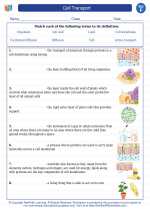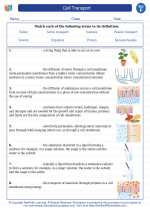Metabolism
Metabolism is the set of life-sustaining chemical transformations within the cells of living organisms. These metabolic processes allow organisms to grow and reproduce, maintain their structures, and respond to their environments.
Key Concepts
- Anabolism: The set of metabolic pathways that construct molecules from smaller units, requiring energy.
- Catabolism: The set of metabolic pathways that break down molecules into smaller units, releasing energy.
- Energy Metabolism: The processes by which the body obtains, stores, and uses energy from the food we consume.
- Metabolic Rate: The rate at which the body expends energy or the rate at which an organism uses energy.
Study Guide
- Define metabolism and its importance in living organisms.
- Explain the difference between anabolism and catabolism.
- Describe the process of energy metabolism in the human body.
- Discuss the factors that can affect an individual's metabolic rate.
- Provide examples of how metabolism is involved in the growth, development, and maintenance of organisms.
◂Science Worksheets and Study Guides Sixth Grade. Cell Transport
Worksheet/Answer key Cell Transport
Cell Transport  Worksheet/Answer key
Worksheet/Answer key Cell Transport
Cell Transport  Vocabulary/Answer key
Vocabulary/Answer key Cell Transport
Cell Transport  Vocabulary/Answer key
Vocabulary/Answer key Cell Transport
Cell Transport 

 Worksheet/Answer key
Worksheet/Answer key
 Vocabulary/Answer key
Vocabulary/Answer key
 Vocabulary/Answer key
Vocabulary/Answer key

The resources above cover the following skills:
Reading Standards for Literacy in Science and Technical Subjects
Craft and Structure
Determine the meaning of symbols, key terms, and other domain-specific words and phrases as they are used in a specific scientific or technical context relevant to grades 6-8 texts and topics.